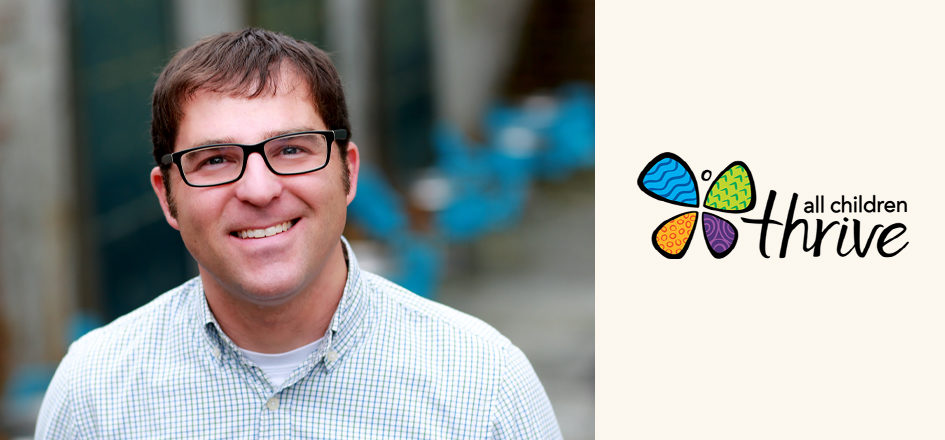The Power of Effective Community Partnerships: Spotlight on Cincinnati’s All Children Thrive Learning Network

We recently had the opportunity to speak with Dr. Andrew Beck about the All Children Thrive (ACT) Learning Network at Cincinnati Children’s Hospital Medical Center. As part of the hospital’s larger strategic plan, ACT brings together patients, families, local city officials, the school district, and social service agencies to collaborate and implement shared strategies to create an environment where children can thrive. Uniquely positioned to respond to the COVID-19 pandemic, the ACT is an example of a network that is prioritizing community-wide aims, empowering caregivers, and setting measurable goals to effectively tackle challenging problems that can’t be solved by health systems alone.
The following is an edited and condensed interview with Dr. Andrew Beck, an attending physician in the Divisions of General and Community Pediatrics and Hospital Medicine, where we discuss the intricacies of the ACT model, how it’s adapted in light of COVID-19, and the path forward.
Health Leads: What makes All Children Thrive (ACT) unique?
Dr. Beck: During the development of the hospital’s 2020 strategic plan, we identified four outcome measures to focus on: (1) reducing infant mortality, (2) measuring and addressing what it means for kids to be ready to learn and thrive in kindergarten (Thrive at Five), (3) increasing third-grade reading proficiency, and (4) reducing disparities in hospital bed days and admissions across neighborhoods. We also agreed on the guiding principles of improvement teams, shared measurement, multiple voices, and co-production – the idea that we develop solutions together, learn from one another, and teach one another – to form the foundation for the ACT network’s success over the past five years.
Health Leads: How did patients and community members engage with the process?
Dr. Beck: At the start, our work focused on lifting up stories from our patients and families and using the insights we gleaned to inform the strategic plan. Over time, we defined the parameters required to put community voices front and center, while ensuring that we create opportunities for the co-production and co-leadership of improvement efforts. For example, the community activation and community well-being teams in the network are actively co-led by family partners who help design the structure of what the work is going to look like. That has been key to addressing some of the root causes of each of the four big outcome measures.
Health Leads: How do you work across institutions in a community? How do you get them to the table and decide how to work together?
Dr. Beck: Some of the central tenets behind ACT’s cross-sector partnerships are: agreeing upon a shared goal, developing shared principles and methodology, and filling capability gaps. A lot of effort has also gone into building quality improvement capabilities across the hierarchy of a certain structure so that there’s buy-in from both leaders and people on the frontlines who are doing the work. This allows us to speak the same language, build off the same theory, and track our outcomes over time.
The last thing that has been key is the idea of co-production and co-design. When we get to the point of testing, it’s crucial that we have the right perspectives at the table to design both our theory and our plan of action in a collaborative way. To pursue that type of approach, we try to figure out where we are missing key expertise and how we can bring it into our work.
Health Leads: How has ACT responded to the COVID-19 crisis?
Dr. Beck: As it became more apparent that COVID-19 was going to change our day-to-day reality, we adapted our focus to ensure that we were contributing to local COVID-19 efforts in ways that aligned with our strengths and core values. Our teams now focus on areas like prevention, population-wide surveillance in partnership with local health systems and health departments, meeting basic needs by supporting partners well versed in distribution and supply chains, helping children and families feel safe and supported at home, enhancing social connectedness, etc.
Health Leads: Has ACT enabled a stronger, more coordinated community-wide response?
Dr. Beck: Although it is early, I would like to say yes. Our team has been at the table for important community-wide discussions related to health care delivery, preventing disease and inequities in disease experience, supporting children who are now out of school, supporting families with limited access to critical resources, and maintaining social connectedness even when physically distant. More importantly, our team has ensured that the family and community voice is similarly present at the table so that the strategies developed truly meet the needs of the stakeholders.
Health Leads: How has the impact of COVID further exposed health disparities in Cincinnati, and what steps can health systems take to mitigate it now?
Dr. Beck: While it’s too early to tell the degree to which COVID-19 morbidity and mortality falls along racial and socioeconomic lines in Greater Cincinnati, we do know that other ramifications of the pandemic clearly have a disproportionate impact on those who have had barriers placed in front of them already. Well before COVID-19 came to our city, we knew that many within our own backyard had limited access to food, hygiene supplies, transportation, wireless internet, and more. These limitations have been exacerbated by the spread of the virus.
Fortunately, health systems, ACT, and countless community partners have stepped up. Largely as a convener and trusted member of the community, we are working with our family partners to elevate the gaps and bringing together key partners with the expertise and ability to start to fill those gaps. Although challenges remain, we have celebrated many bright spots, including partners at the public school district heroically stepping in to ensure that children still receive their meals, local distilleries mass-producing hand sanitizer, and frontline healthcare workers developing videos in multiple languages to answer the most frequently asked questions of our families.
Health Leads: What advice would you give to other community health leaders in both responding to the immediate needs and rebuilding for the future?
Dr. Beck: Although this is a time of unbelievable challenge, it can also be a time for us to re-evaluate both our positions within communities and our abilities to alter day-to-day processes in ways that could and will outlast COVID-19. What we’ve learned about the flow of data, prevention strategies, connections between sectors, and the underscored importance of the family/community voice that will help us perform better now and in the future. We have trusted members of the community, and we have to use this trust to help ensure that service providers within the community and across sectors work to achieve complementary goals.
Learn more about the All Children Thrive Learning Network and the power of community partnerships in action by visiting https://www.actnowcincy.org/.




